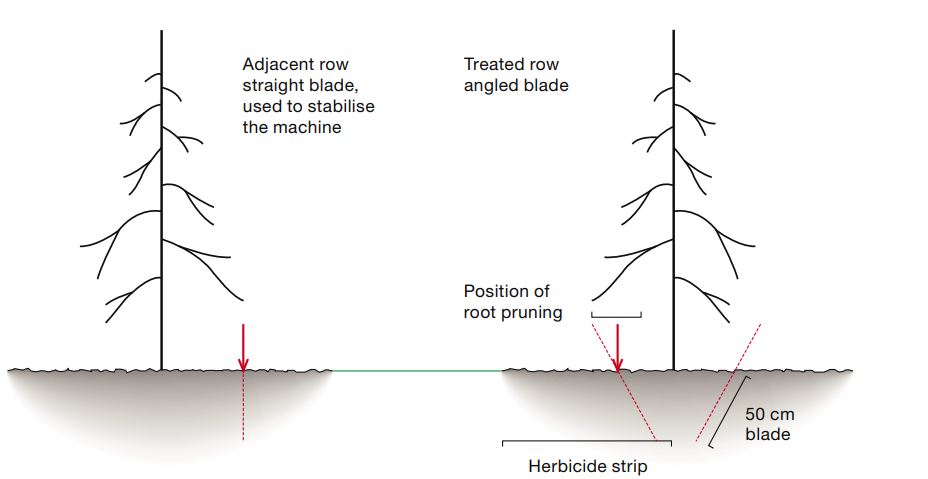Please click here to access the main AHDB website and other sectors.
- Home
- Knowledge library
- Best practice for root pruning in apples and pears
Best practice for root pruning in apples and pears
Discover the full findings of the three-year trial, which outlines best practice for root pruning.
This information was last udated in 2008.
Timing
- Root pruning should be carried out while the trees are fully dormant between November and February and no later than six weeks before the anticipated bud burst.
- Pears are therefore best treated before Christmas.
- A follow-up treatment in July can increase the effect on growth control without adversely affecting fruit size.
- Although root pruning at petal fall reduces growth it should be avoided as it can have a detrimental effect on fruit size.
Distance from the trunk
- The closer the root pruning treatment is applied to the trunk, the greater the growth control, but also the greater the reduction in the fruit size.
- The optimum distance to give good growth control without too much reduction in fruit size is approximately two thirds of the way from the trunk to the edge of the tree canopy.
- Where irrigation is available, pruning may be done closer and supplementary irrigation used to mitigate the effect on fruit size.

Figure 1. Root pruning treatment.
Managing soil moisture
Measurements during the trial clearly showed that root-pruned trees were drawing water from a greater depth than untreated control trees.
This requires more energy and is less efficient than drawing water from near the surface.
Supplementing available moisture by irrigation, or conserving it through mulching, will help maintain fruit size in root pruned orchards.
Nutrition
Root pruning creates only relatively small effects on the nutrient content of leaves and fruit from the treatments, but nitrogen and magnesium levels may be reduced in Cox and potassium levels can be reduced in Conference.
- It is therefore advisable that regular monitoring of the leaf mineral content is carried out and supplementary feeds and top dressings applied as necessary.
- This will be more important in heavy cropping orchards and in orchards where root pruning has been carried out for several years in succession.Top dressings should only be applied down the tree rows to the area between the root pruning slits.
Caution with herbicides
Do not apply herbicides immediately after root pruning as the material may easily come into contact with the cut root surfaces and cause damage to the tree.
Either wait for the slits to close up or use a press wheel behind the blade.
Long-term effects
During the trial in Project TF 154, no long-term cumulative effects were noted.
However the degree of growth control was affected by seasonal factors, most notably spring and summer rainfall.
Remain flexible
The technique does allow growers to fine tune the treatments, depending on the degree of growth control required and seasonal factors such as crop load and growing conditions.
Options include:
- Varying the distance of the pruning slot from the trunk.
- Treating only one side of the tree one year and the other side the next.
- Applying a follow-up treatment approximately 3-4 weeks after petal fall if growth is strong and fruit set is poor.
- Using the technique to deliberately reduce fruit size in large fruiting varieties (eg Jonagold).
Original Author
Tim Biddlecombe, FAST

